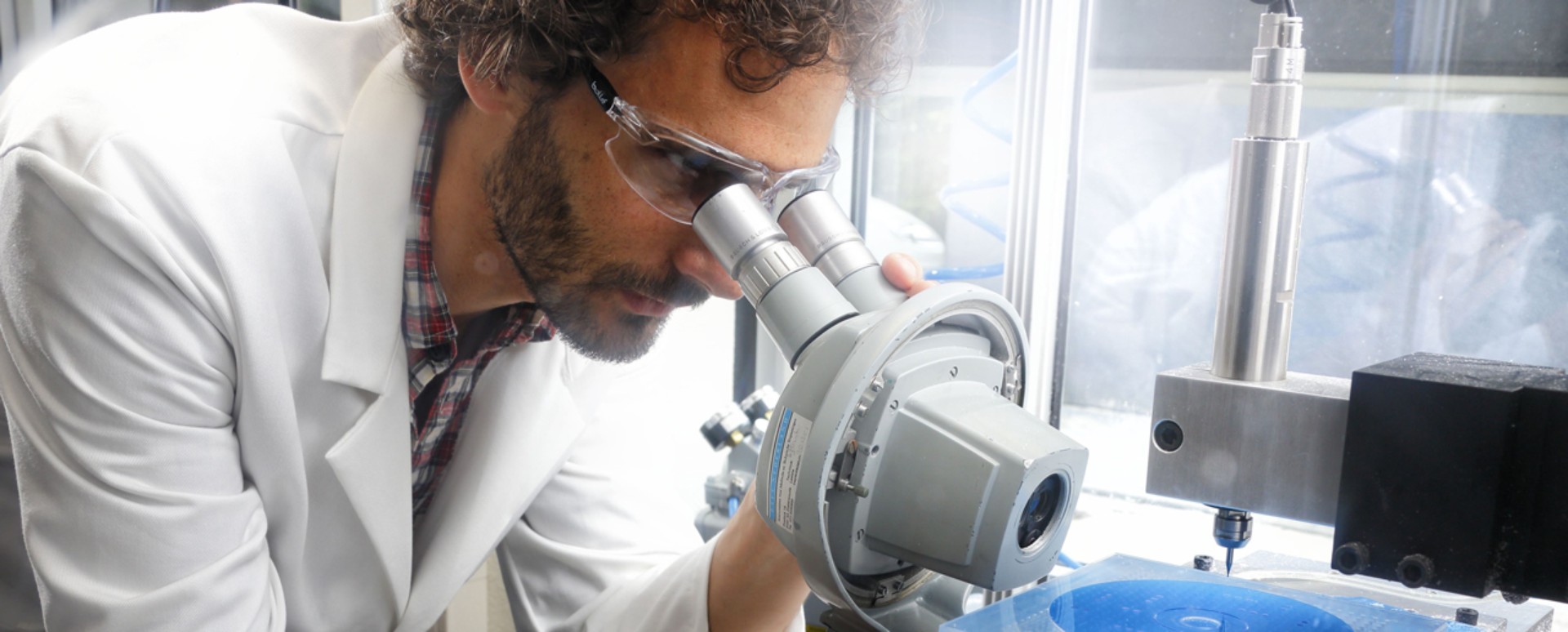
Sometimes our professional lingo can be overwhelming, especially when it comes to the different technological fields we operate in. We have described the most used terms and hope this ‘cheat sheet’ will shed some light if needed.
Microfluidics
Microfluidic systems transport, mix, separate, or otherwise process small volumes of fluids. These fluids can be passively driven by capillary forces. But microfluidic platforms can also contain active components like micropumps and microvalves.
Substances, particles or cells can be measured, observed and manipulated. Processes that are normally carried out in a lab, can be efficiently miniaturised on a single chip, which reduces sample and reagent volumes.
Several functions can be integrated on the platform, and as a result, various chemical, biological or biochemical processes can be performed, in sequence or simultaneously.
Microfluidics is an application-oriented, multidisciplinary field. The technology is used in life science, chemistry, medicine and biotechnology. Upcoming fields that use microfluidic applications are mobile diagnostics (Point-of-Care) and personalized medicine.
MEMS
MEMS stands for Microelectromechanical systems. MEMS are complex microscale systems that contain moving parts or fluids, and are built on a single chip. MEMS require a lithography process for manufacturing and can demand other semiconductor device fabrication technologies like molding, plating, wet etching (KOH, TMAH), dry etching (DRIE, RIE), deposition and bonding.
The advantages that MEMS offer are low power consumption, flexibility, reliability and robustness.
Micronit’s engineers have worked on various MEMS projects and developed a range of MEMS structures for customised applications. Other terms for MEMS are Micromachines (Japan) and Micro System Technology (MST) (Europe).
BioMEMS
BioMEMS can mean any MEMS used in a biological application, but mostly the term is used to indicate a MEMS device with a microfluidic component.
BioMEMS applications are effectively used in molecular biology, and are becoming more and more vital in diagnostic analysis like drug research through tissue engineering, Point-of-Care devices or vitality monitoring. Applications can also be found in food chemistry.
Occasionally, BioMEMS chips have to be coated with a specific biological coating. This is particularly challenging in regard to the last processing step – the chip packaging. As biological substances are highly sensitive to temperature, common packaging methods would destroy the biological coating, and its functionality. At Micronit, we use and have developed specific bonding techniques at room temperature, which help to solve these problems.
Lab-on-a-chip
A lab-on-a-chip is a microfluidic chip which incorporates one or more laboratory functions. Labs-on-chips are used in scientific and industrial analytics. Special applications are found in the medical field, particularly in personalized medicine and Point-of-Care / Point-of-Need diagnostics. Labs-on-chips have the potential to revolutionise diagnostic procedures in health care. Results are achieved much faster than using standard methods, and the required sample volumes are much smaller. Point-of-Care / Point-of-Need products allow fast and reliable analyses for settings with no lab support.
In pharmaceutics and genetics, the high throughput potential of lab-on-chip-systems enables thousands of experiments to be conducted in parallel. This results in a more reliable and faster development of new drugs and an acceleration in the determination of genes.
BioMEMS and Lab-on-a-chip obviously have considerable overlap. BioMEMS is typically focused on mechanical parts and microfabrication technologies made suitable for biological applications, whilst Lab-on-a-chip is originally more concerned with miniaturization and integration of laboratory processes.
CMOS post-processing
CMOS (Complementary Metal Oxide Semiconductor) is the dominant process technology for the fabrication of integrated circuits (IC’s). CMOS architectures are mostly silicon based. Advantages of CMOS IC’s are low static power consumption, the ability to place a large number of logic functions on a chip and high noise immunity.
In recent years, focus shifted from dimensional scaling, leading to ever higher performing microprocessors, to the addition of new components, new layers and new functions. Combining multiple functionalities in a small area offers numerous opportunities for the field of microelectronics. Diversification will lead to entirely new microsystems, that can also be used in the medical field, like for example human-implantable electronics.
Contact us
Do you need some advice on the project you are working on? Let us know!